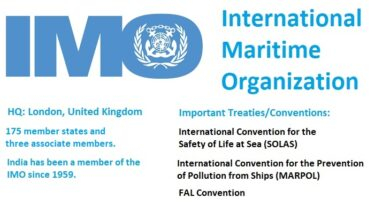North Atlantic Treaty Organization
Context:
Ukrainian President Volodymyr Zelensky has urged North Atlantic Treaty Organization to speed up his country’s membership in the alliance, saying it was the only way to end fighting with pro-Russia separatists.
About
- The North Atlantic Treaty Organization (NATO), also called the North Atlantic Alliance,
- It is an intergovernmental military alliance between 30 European and North American countries.
- The organization implements the North Atlantic Treaty that was signed on 4 April 1949.
- NATO constitutes a system of collective defence whereby its independent member states agree to mutual defence in response to an attack by any external party.
- NATO’s Headquarters are located in Haren, Brussels, Belgium, while the headquarters of Allied Command Operations is near Mons, Belgium.
- Since its founding, the admission of new member states has increased the alliance from the original 12 countries to 30. The most recent member state to be added to NATO was North Macedonia on 27 March 2020.
- NATO currently recognizes Bosnia and Herzegovina, Georgia, and Ukraine as aspiring members. An additional 20 countries participate in NATO’s Partnership for Peace program, with 15 other countries involved in institutionalized dialogue programs.
- The combined military spending of all NATO members constitutes over 70% of the global nominal total. Members agreed that their aim is to reach or maintain the target defense spending of at least 2% of their GDP by 2024.
- A key provision of the treaty, the so-called Article 5, states that if one member of the alliance is attacked in Europe or North America, it is to be considered an attack on all members. That effectively put Western Europe under the “nuclear umbrella” of the US.
- NATO has only once invoked Article 5, on September 12, 2001, following the 9/11 attacks on the World Trade Center in the US.
- NATO’s protection does not extend to members’ civil wars or internal coups.
Relevance of NATO
- With the collapse of the USSR, NATO lost its essential raisons d’etre, and for most NATO members, the primary concern now is the expansionist ambition of China.
- NATO has traditionally focused on Russia and the European neighbourhood and recognizes the need to deter “revisionist” and “militarily advanced” Russia, and the threat posed by rogue nations such as North Korea.
Deviance of members
- Turkey has rejected NATO’s military plan for the Baltic nations against Russia, unless it receives support to defeat Syrian Kurds at its borders, something that France and the US do not agree with.
- The tensions have come in the backdrop of “Operation Peace Spring” conducted by the Turkish military along the Syrian border in October.
- During NATO’s Brussels Summit last year, Trump criticised European nations, especially Germany for not spending enough on defence.
- As per an agreement that was reached in 2014, member nations are supposed to spend up to 2% their GDP on defence on a voluntary basis.
- Until 2018, the US spends the highest percentage of its GDP (at least 3.5%) on defence, while the Europeans, including the French, the Germans, the Italians, and the Spaniards, spend less than 2%.
Challenges before NATO
- The great challenge before NATO is its seeming inability to align the diverging priorities of its member nations.
- France’s priority at the moment is the eradication of terrorism from northeast Syria, while the US under Trump clearly wants to get out of the Middle East and focus more on the military rise of China.
- The challenge is made stronger by the personalities of the leaders — the Europeans are clearly impatient with Erdogan, and Trump’s unpredictability and repeated attacks on European countries and leaders has not endeared him to them.
Source: The Hindu



